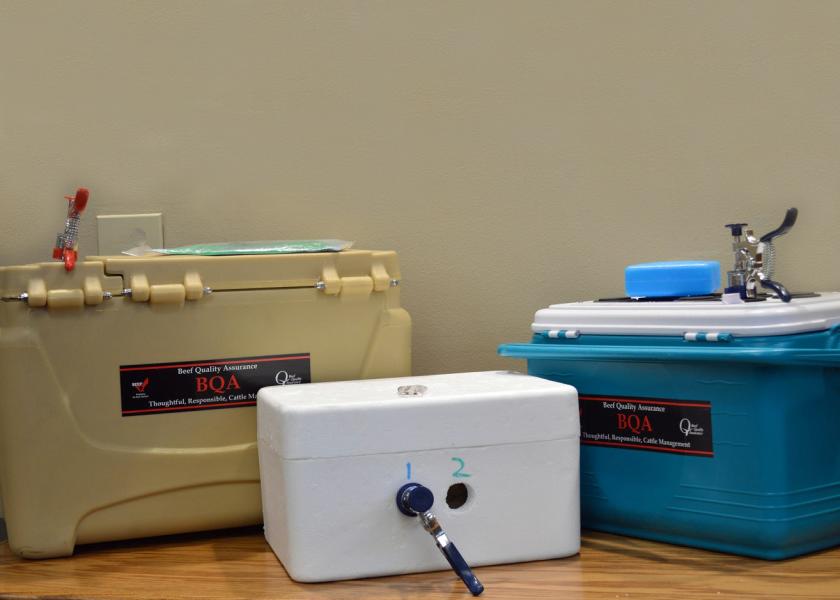Using Vaccines This Spring? Keep ‘Em Cool.

Vaccines are effective tools against a host of cattle diseases but how they’re handled – from the time purchased to the time used – can significantly affect their efficacy.
“It's our job to keep as much of that vaccine effectiveness as possible until we actually get it injected into the animal that is going to need it for disease protection,” says Glenn Selk, Oklahoma State University emeritus Extension animal scientist.
Keeping the vaccine at the temperature prescribed by the label is a key factor. “Use a cooler with cold packs while transporting and while vaccinating to keep the vaccine at the recommended temperature and also to minimize exposure to sunlight,” encourages Taylor Grussing and Tracey Erickson, South Dakota State University Extension.
Selk says most of the vaccines used in the cattle industry require being stored at a temperature between 35 degrees and 45 degrees Fahrenheit. He says to check your refrigerator on a regular basis to make sure it can maintain that temperature range. Also, chart the results so you have a historical perspective on its performance over time.
Selk references two studies conducted independently of each other – one in Arkansas and the other in Idaho – that illustrates how much refrigerator temperatures can vary, even when the thermostat is set properly.
“In the case of Arkansas, only about 27% of the refrigerators that researchers checked stayed within that temperature range 95% of the time,” he notes. “It was a little better in the Idaho study but not much. Only about 34% of the refrigerators that they checked stayed within that temperature range 95% of the time. That tells me that we want to really stay on top of this,” he adds.
Vaccinations shipped from pharmaceutical companies are also at risk of degradation, says Jason Banta, Texas A&M AgriLife Extension beef cattle specialist. He recommends checking the container for coolness upon arrival. If it’s warm, he says to contact the supplier and return the vaccine.
Banta also cautions that – at the other extreme – you don’t want vaccines to dip in temperature below what the label recommends. Freezing can be just as harmful to pharmaceuticals as heat.
When you’re ready to work cattle, continue to keep the vaccine and syringes at the proper temperature range by using a small ice chest. “That will keep them cool until you’re ready to inject the vaccines,” notes Selk, who offered his recommendations on handling vaccines as part of his weekly series, Cow Calf Corner.
Banta recommends using two coolers—one for the vaccine bottles and the second one for syringes.
More information on handling vaccines is available from Selk and his colleagues in the fact sheet, Use, Handling and Care of Vaccines, available at https://bit.ly/3d346Bn.
Post-Mortem on Ruminal Tympany Or Bloat
New COVID-19 Loan Funding Will Deplete Quickly: Be Prepared







